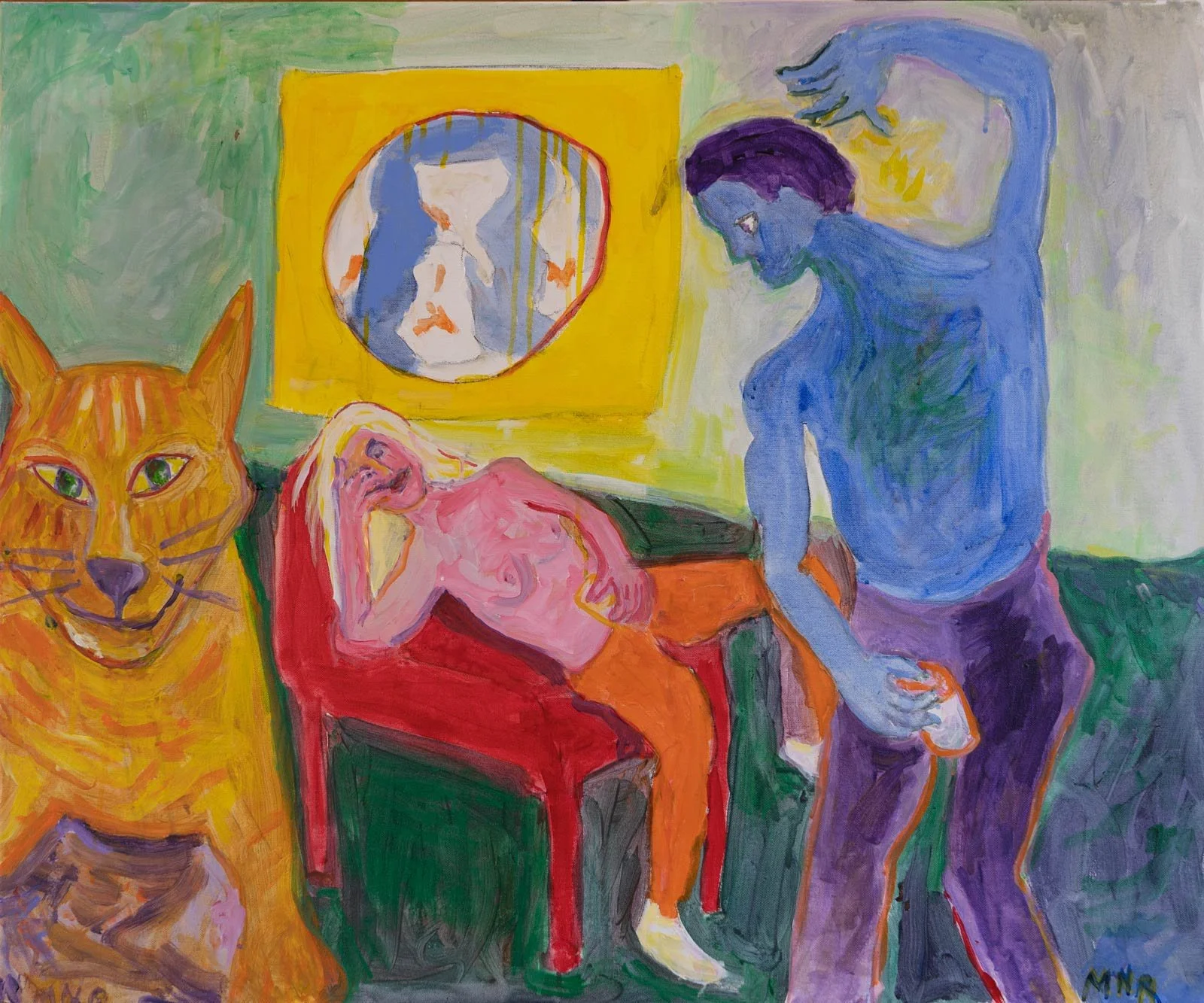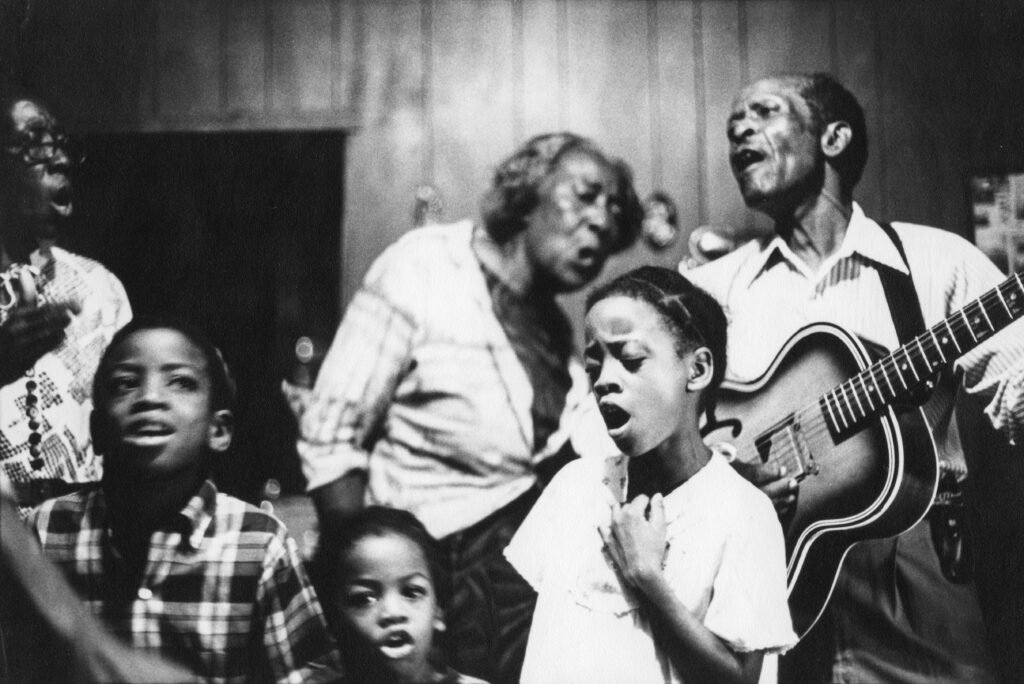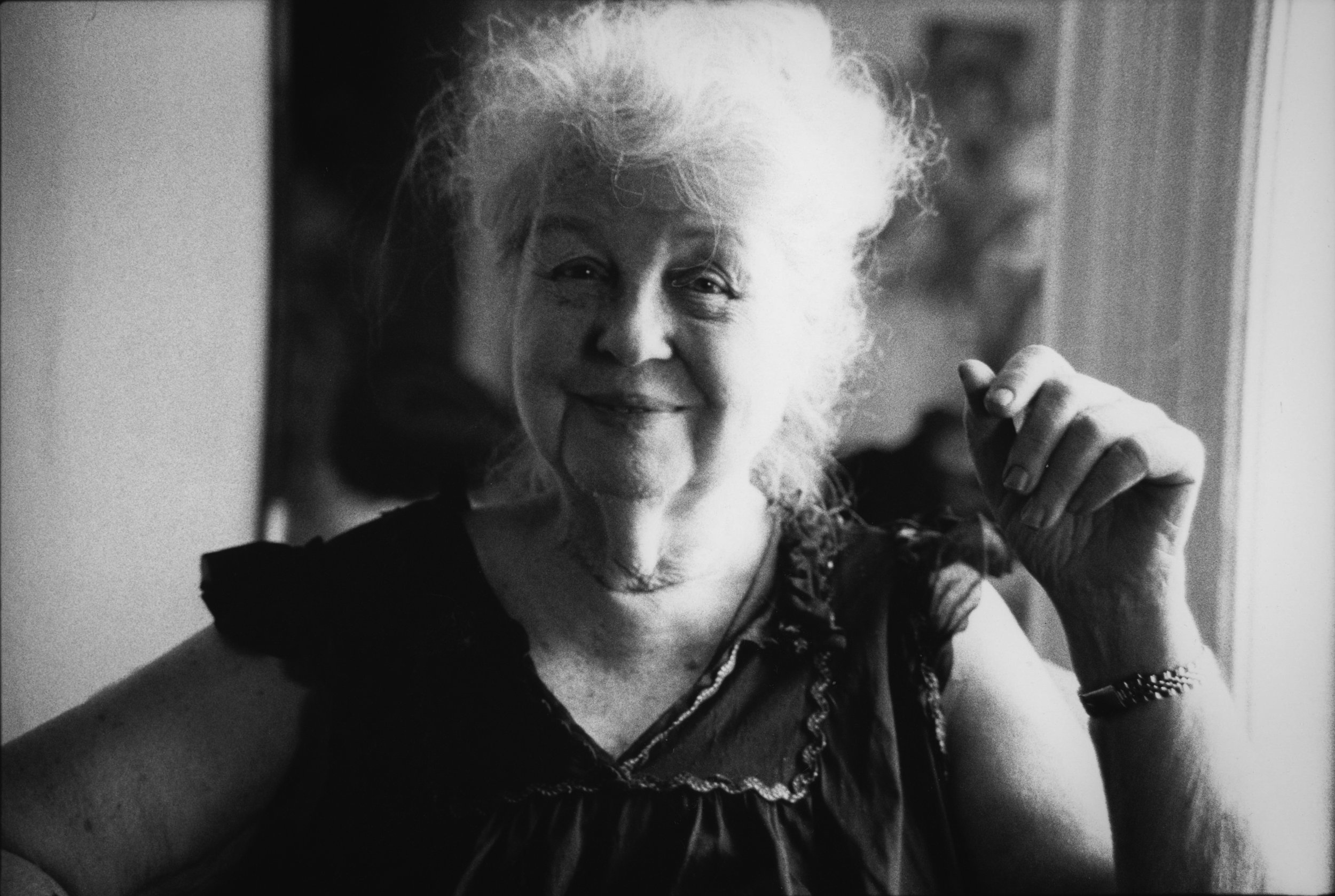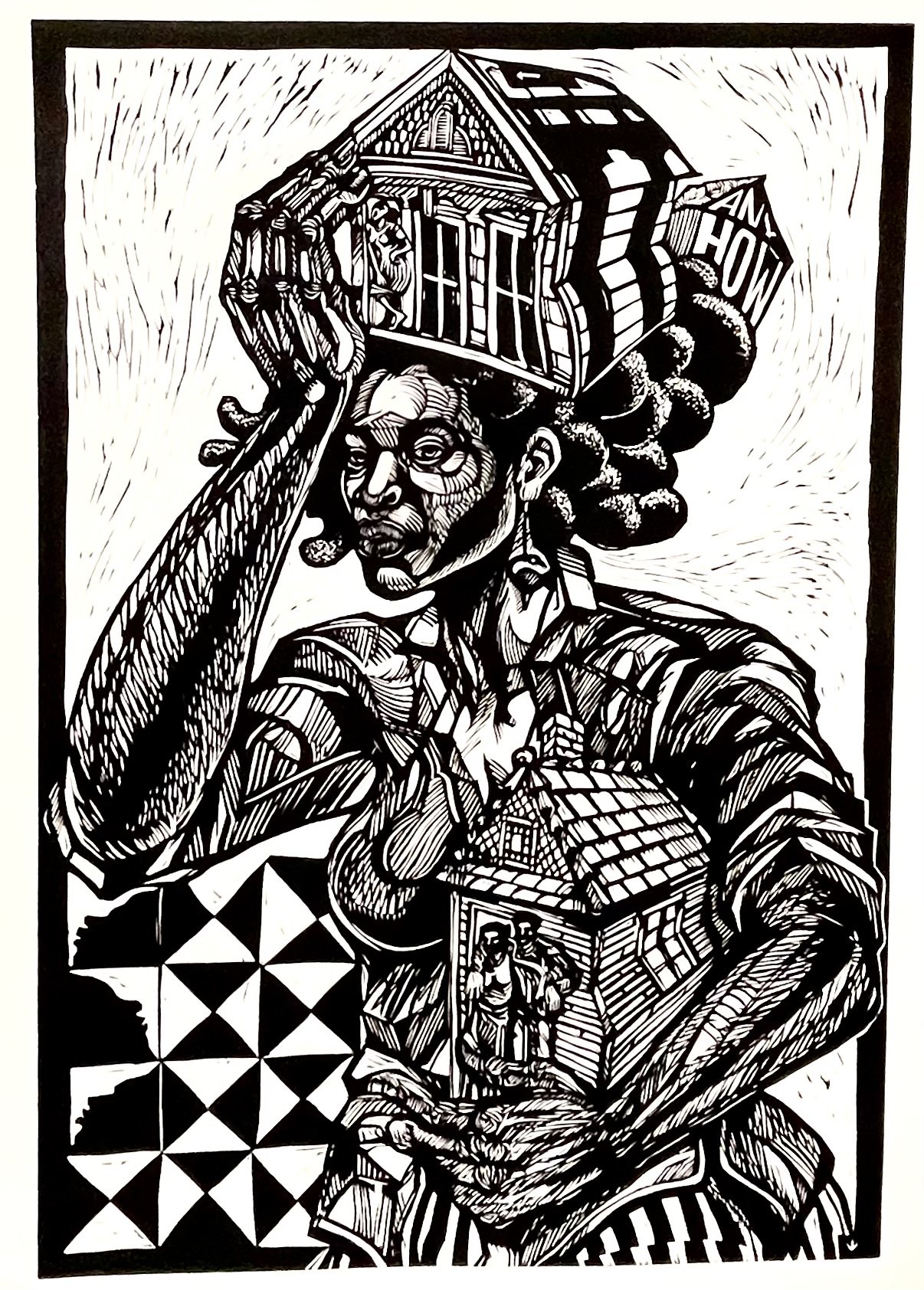Cat Dance
The Lady with Many Cats
Margo Newmark Rosenbaum: A Life in Color, Story, and Image
Painter and photographer Margo Newmark Rosenbaum has spent over five decades creating work that blends intuition, humor, memory, and formal clarity. Equally at home with a paintbrush or a camera, her dual practice bridges the world of imaginative visual narrative and documentary realism, always grounded by a deep respect for human presence and place.
Rosenbaum’s paintings are unmistakable—boldly colored, psychologically rich, and often playfully surreal. Trained in the Bay Area Figurative tradition under Richard Diebenkorn and Elmer Bischoff, she absorbed the tools of modernism but quickly broke into her own more intuitive language. Her figures often appear in domestic settings—kitchens, living rooms, porches—surrounded by animals, symbolic props, and open-ended emotion. Dragons creep into corners. Cats and dogs become stand-ins for subconscious moods. Color is not used to describe but to provoke. Her canvases, both playful and serious, feel like scenes from an interior fable.
One standout example currently on view in Matney Gallery’s Summer Salon is Cat Dance (Acrylic on Canvas, 2019). A reclining nude, a massive orange cat, and a blue male figure orbit each other in a saturated, theatrical room—somewhere between home and dream. Like much of Rosenbaum’s work, it invites the viewer to feel before interpreting. It’s whimsical, strange, and entirely intentional. That’s her strength: turning domestic scenes into emotional allegory without losing warmth or humor.
Doc and Lucy Barnes with Kids, photograph
Alongside her painting, Rosenbaum has also produced an extraordinary body of photographic work—especially as a documentarian of traditional American music. Beginning in the late 1960s, she accompanied her husband, folklorist and artist Art Rosenbaum, on field recording trips across the South and Appalachia. While Art recorded voices, Margo captured faces. Her black-and-white photographs of blues musicians, gospel singers, fiddle players, and folk artists are now considered some of the most iconic visual records of Southern vernacular culture. Many appeared in Grammy-winning box sets (The Art of Field Recording) and museum exhibitions (Folk Visions and Voices, Shout!), and are now part of university archives and private collections.
Alice Neel, photographl
But her photographic vision extends well beyond the documentary. In 2021, her solo exhibition Some Portraits in New York revealed informal, unguarded portraits of artists and writers like James Baldwin, Alice Neel, Philip Guston, and Howard Finster. Her camera doesn’t just record; it observes, lingers, and honors. Whether photographing a gospel quartet or a painter in their apartment, Rosenbaum’s photographs carry the same qualities as her paintings—empathy, intimacy, and a sense that something just happened or is about to.
Margo Newmark Rosenbaum’s dual career is rare and deeply influential. She has managed to balance formal training with a fiercely personal vision, and to move fluidly between the roles of painter, documentarian, storyteller, and observer. For decades she has illuminated the emotional and cultural life of the American South—not through grand gestures, but through careful attention, deep imagination, and the freedom to blur boundaries between the real and the surreal.
Her paintings and photographs are not opposites. They are reflections of the same core truth: that the world, if you look closely, is always a little stranger, funnier, and more meaningful than it first appears.
“Cat Dance” is currently on view in the 2025 Summer Salon at Matney Gallery. For sales or press inquiries, contact the gallery directly










